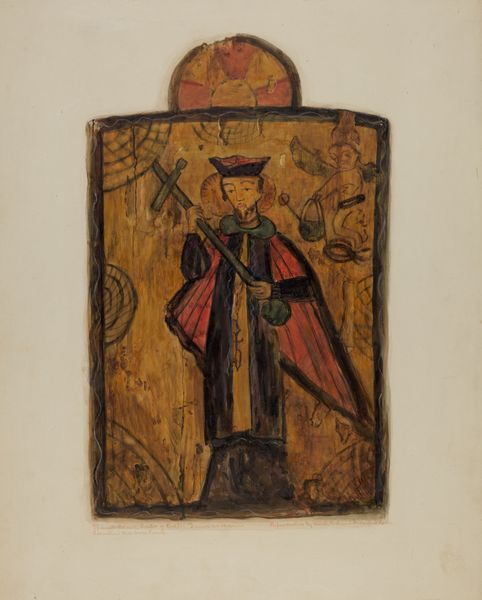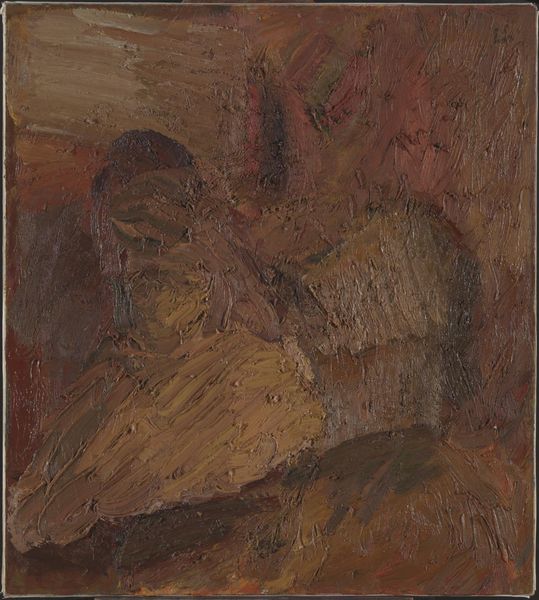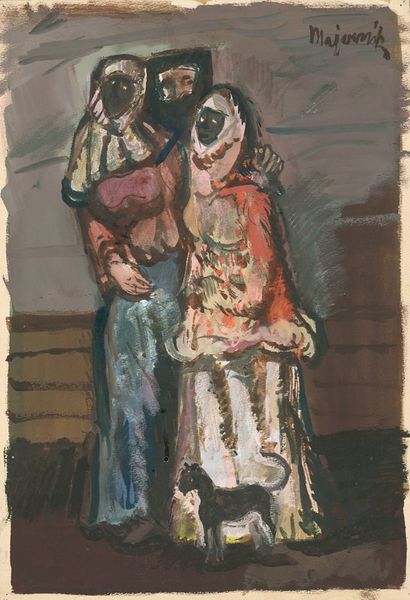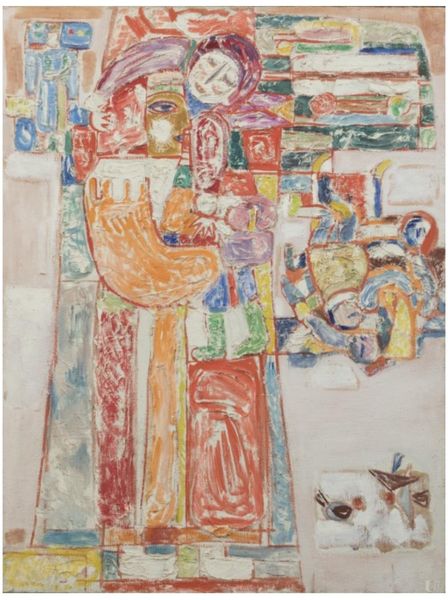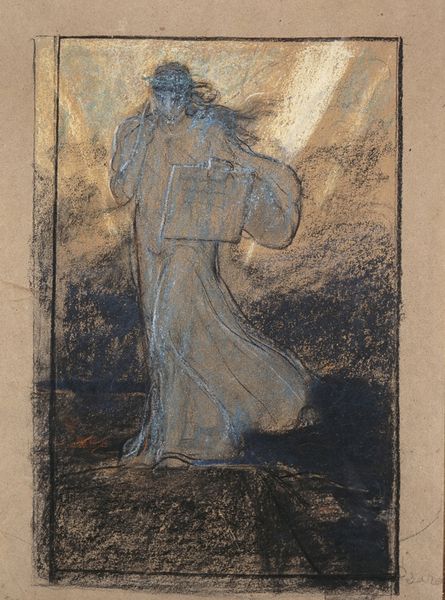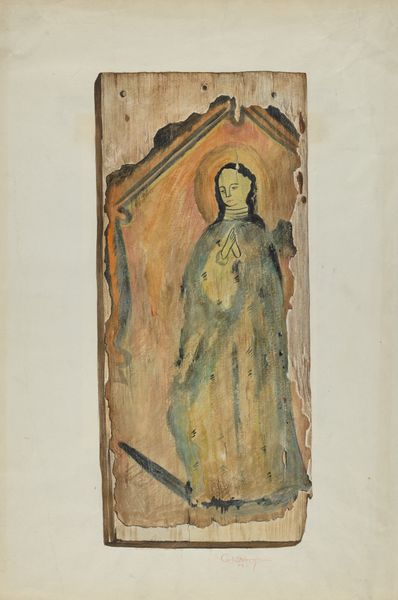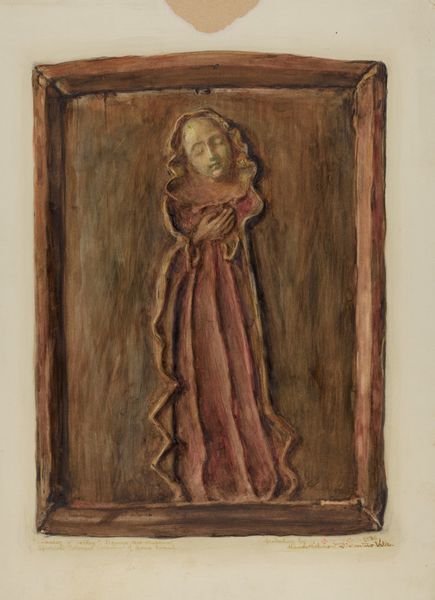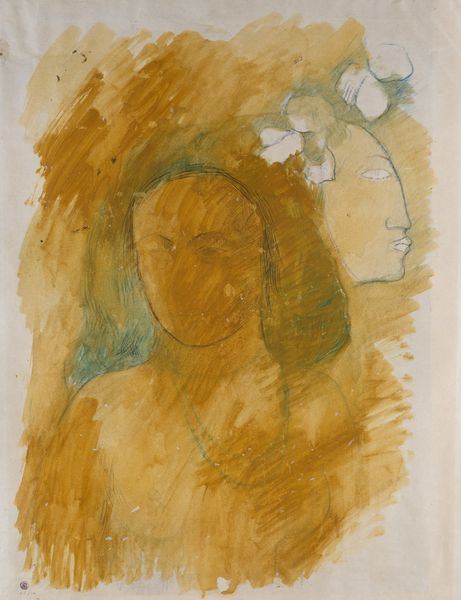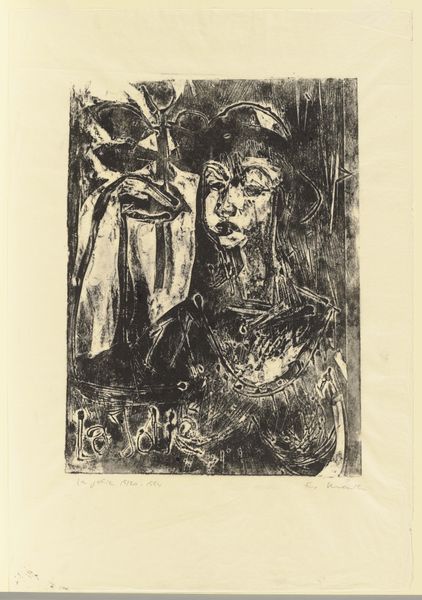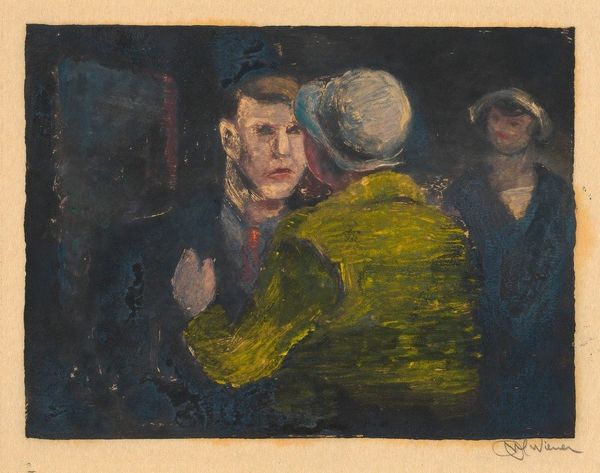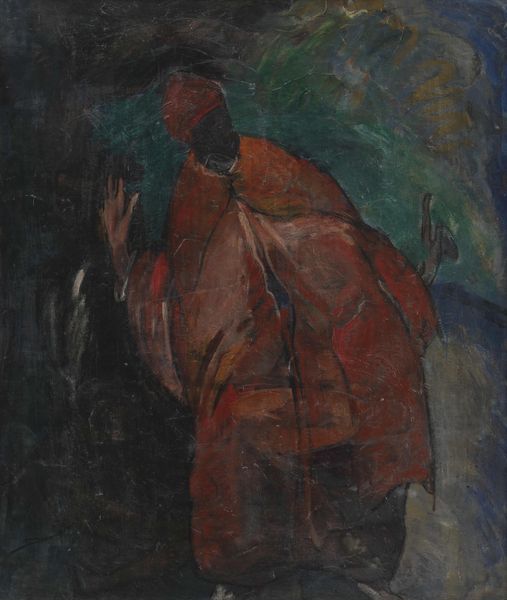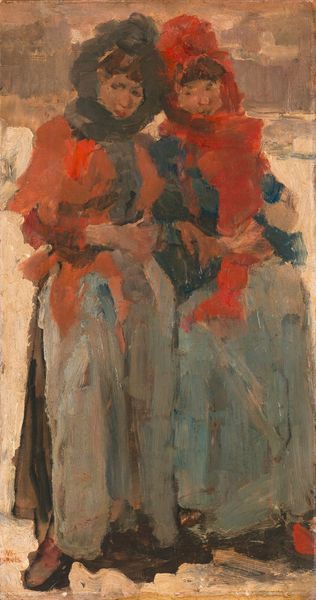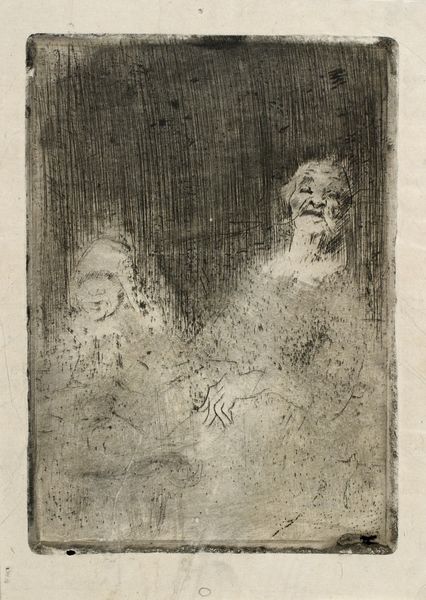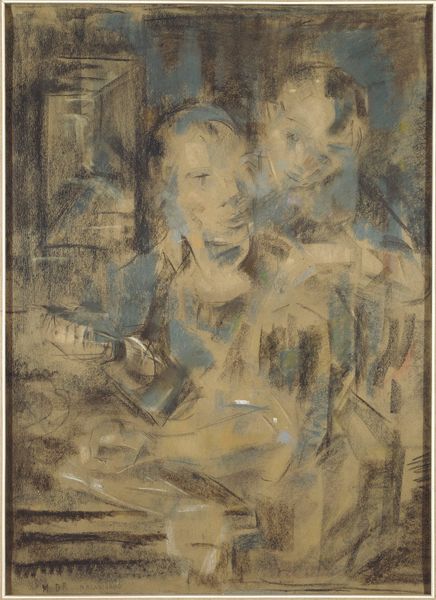
drawing, watercolor
#
portrait
#
drawing
#
water colours
#
figuration
#
oil painting
#
watercolor
#
folk-art
#
genre-painting
#
modernism
#
watercolor
Dimensions: overall: 35.2 x 29.5 cm (13 7/8 x 11 5/8 in.) Original IAD Object: Top: 8 3/8"; Bottom: 8 5/8" x 10 3/4"
Copyright: National Gallery of Art: CC0 1.0
Editor: Here we have Maude Valle's "Santos Retablos" from 1936, done in watercolor. It's intriguing; the figures are simplified but evocative. What strikes you about this work? Curator: Well, let's consider the "watercolor" label. What kind of paper was used? How readily available and affordable was it? That shapes the material constraints under which Valle worked. The very *act* of choosing watercolor, something not always valorized as “high art,” and folk subject matter reflects an interesting artistic decision. Editor: So, it’s not just about *what* she painted, but *how* and *why* she chose those materials? Curator: Precisely. Notice how the medium allows for transparency, almost as if these holy figures are emerging from or fading into the wood-like retablo surface, which complicates our understanding of “drawing.” And those rough edges, the drips – are these accidental or deliberate challenges to conventional ideas about “finish” in art? Editor: That's fascinating. It makes me wonder about Valle’s access to formal training. Did she intentionally adopt a folk-art style, or was she working with what was available to her? Curator: A vital question. This pushes us to consider the conditions of artistic production – who has access to resources, education, and markets? Perhaps the work serves as an intentional challenge to traditionally crafted Santos and the hierarchy around materials? Editor: I hadn't thought of it that way. Considering the materiality of art really does change how you see the artist's intention. Curator: Indeed, shifting our focus away from solely iconographic readings, to what this artwork *does* materially in its historical context can be revolutionary for understanding art!
Comments
No comments
Be the first to comment and join the conversation on the ultimate creative platform.
